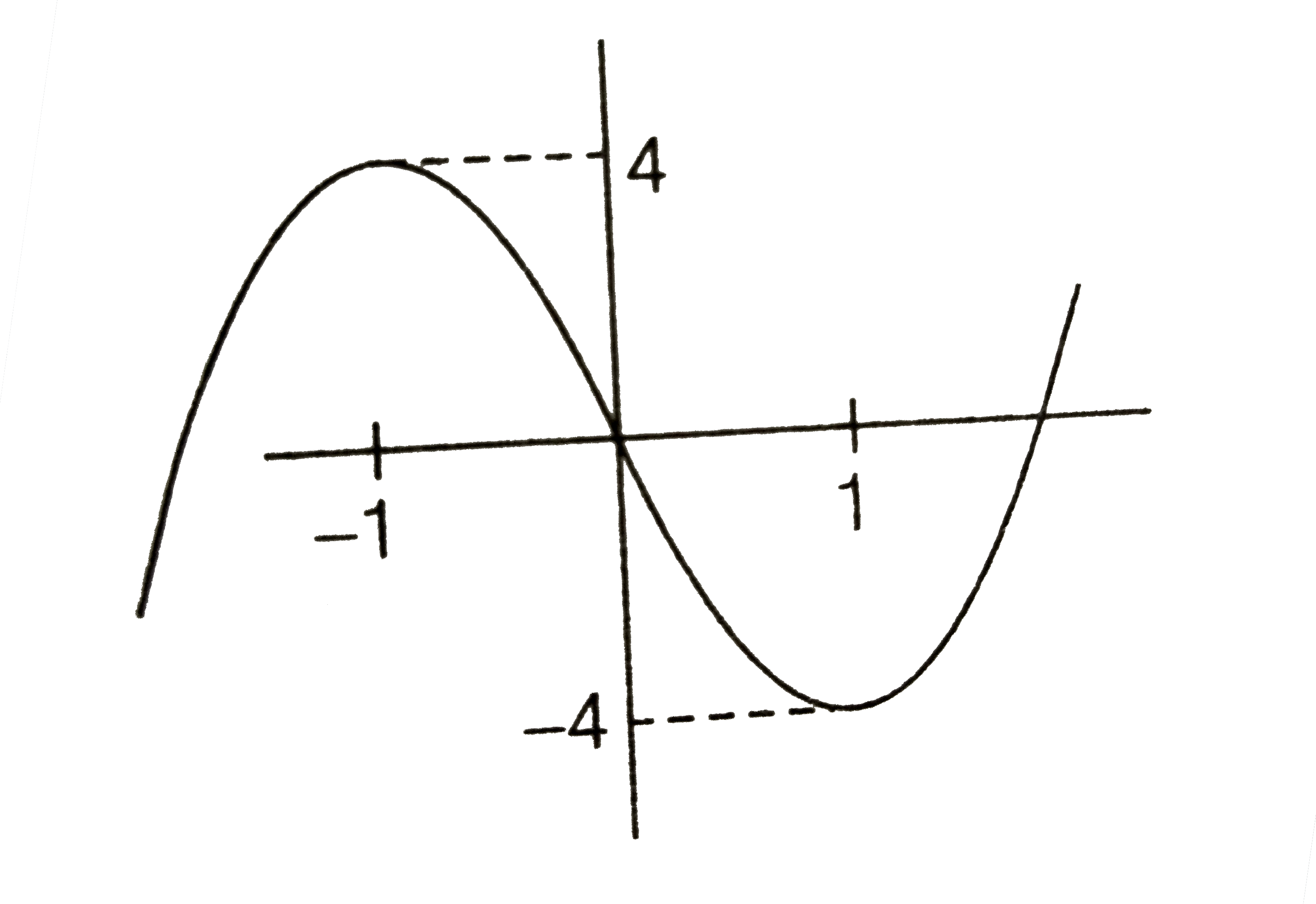Let a ∈ R and f : R→R be given by f(x)=x5−5x+a, then
(a) f(x)=0 has three real roots if a>4
(b) f(x)=0 has only one real root if a>4
(c) f(x)=0 has three real roots if a<−4
(d) f(x)=0 has three real roots if −4<a<4Solution in Punjabi
(a) f(x) has three real roots if a>4
(b) f(x) has only one real root if a>4
(c) f(x) has three real roots if a<−4
(d) f(x) has three real roots if −4<a<4
The correct Answer is:D
f(x)=x5−5x and g(x)=−a
∴f'(x)=5x4−5

=5(x2+1)(x−1)(x+1)
Clearly f(x)=g() has one real root, if a>4 and three real roots if |a|<4.
Topper's Solved these Questions
- THEORY OF EQUATIONSBOOK - ARIHANT MATHSCHAPTER - THEORY OF EQUATIONSEXERCISE - Exercise (Subjective Type Questions)
24 Videos
- THE STRAIGHT LINESBOOK - ARIHANT MATHSCHAPTER - THE STRAIGHT LINESEXERCISE - The Straight Lines Exercise 8 : (Questions Asked in Previous 13 years Exams)
1 Videos
- THREE DIMENSIONAL COORDINATE SYSTEMBOOK - ARIHANT MATHSCHAPTER - THREE DIMENSIONAL COORDINATE SYSTEMEXERCISE - Three Dimensional Coordinate System Exercise 12 : Question Asked in Previous Years Exam
2 Videos
Similar Questions
For what values of m the equation (1+m)x2−2(1+3m)x+(1+8m)=0 has (m∈R)
(i) both roots are equal
View SolutionSolve the following system of inequalities graphically
x+5y≤25,2x+2y≥2,2x−2y≤0,x≥0,y≥0
View SolutionConsider the line L1:x−12=y−1=z+31,L2:x−41=y+31=z+32 find the angle between them.
View SolutionIf f(x)=∫x8+4x4−2x2+2dx and f(0)=0,then (a)f(x) is an odd function (b)f(x) has range R (c)f(x) has at least one real root (d)f(x) is a monotonic function.
View SolutionLate a∈R and let f:R→ be given by f(x)=x5−5x+a, then f(x) has three real roots if a>4 f(x) has only one real roots if a>4 f(x) has three real roots if a<−4 f(x) has three real roots if −4<a<4
View SolutionIf f(x) is a polynomial of degree 5 with real coefficientssuch that f(|x|)=0 has 8 real roots,then the number of roots of f(x)=0
View Solutionf(x) is a polynomial function, f:R→R, such that f(2x)=f'(x)f''(x). Equation f(x) = x has (A) three real and positive roots (B) three real and negative roots (C) one real root (D) three real roots such that sum of roots is zero
View SolutionStatement I The equation f(x)=4x5+20x−9=0 has only one real root.
Statement IIf'(x)=20x4+20=0 has no real root.
View SolutionIf f(x) is a polynomial of degree 5 with real coefficients such that f(|x|)=0 has 8 real roots, then f(x)=0 has
View SolutionLet a∈R and let f:R→ be given by f(x)=x5−5x+a, then (a) f(x) has three real roots if a>4 (b)f(x) has only one real roots if a>4 (c)f(x) has three real roots if a<−4 (d)f(x) has three real roots if −4<a<4
View Solutionf(x) is a polynomial function, f:R→R, such that f(2x)=f'(x)f''(x). Equation f(x) = x has (A) three real and positive roots (B) three real and negative roots (C) one real root (D) three real roots such that sum of roots is zero
View SolutionStatement I The equation f(x)=4x5+20x−9=0 has only one real root.
Statement IIf'(x)=20x4+20=0 has no real root.
View SolutionA function f(x) is such that f(x)=0 has 8 distinct real roots and f(x)=f(6−x) for x∈R. Sum of real roots of the equation f(x)=0 is
View SolutionLate a in R and let f: Rvec be given by f(x)=x^5-5x+a , then f(x) has three real roots if a >4 f(x) has only one real roots if a >4 f(x) has three real roots if a<-4 f(x) has three real roots if -4
View Solutionf(x) is a polynomial function, f: R rarr R, such that f(2x)=f'(x)f''(x). Equation f(x) = x has (A) three real and positive roots (B) three real and negative roots (C) one real root (D) three real roots such that sum of roots is zero
View SolutionA function f(x) is such that f(x)=0 has 8 distinct real roots and f(4+x)=f(4−x) for x∈R. Sum of real roots of the equation f(x)=0 is
View Solution
